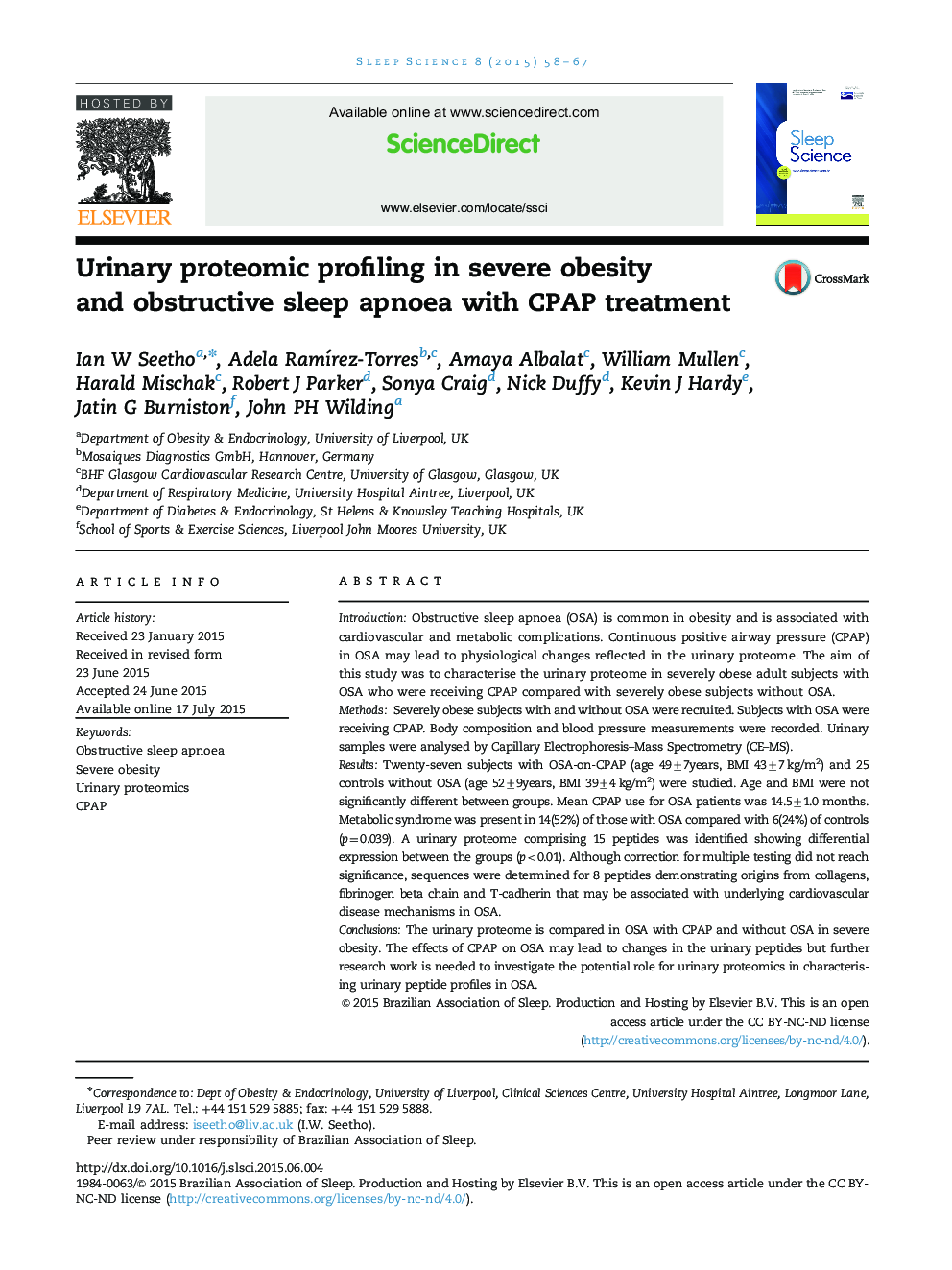| Article ID | Journal | Published Year | Pages | File Type |
|---|---|---|---|---|
| 3026596 | Sleep Science | 2015 | 10 Pages |
IntroductionObstructive sleep apnoea (OSA) is common in obesity and is associated with cardiovascular and metabolic complications. Continuous positive airway pressure (CPAP) in OSA may lead to physiological changes reflected in the urinary proteome. The aim of this study was to characterise the urinary proteome in severely obese adult subjects with OSA who were receiving CPAP compared with severely obese subjects without OSA.MethodsSeverely obese subjects with and without OSA were recruited. Subjects with OSA were receiving CPAP. Body composition and blood pressure measurements were recorded. Urinary samples were analysed by Capillary Electrophoresis–Mass Spectrometry (CE–MS).ResultsTwenty-seven subjects with OSA-on-CPAP (age 49±7years, BMI 43±7 kg/m2) and 25 controls without OSA (age 52±9years, BMI 39±4 kg/m2) were studied. Age and BMI were not significantly different between groups. Mean CPAP use for OSA patients was 14.5±1.0 months. Metabolic syndrome was present in 14(52%) of those with OSA compared with 6(24%) of controls (p=0.039). A urinary proteome comprising 15 peptides was identified showing differential expression between the groups (p<0.01). Although correction for multiple testing did not reach significance, sequences were determined for 8 peptides demonstrating origins from collagens, fibrinogen beta chain and T-cadherin that may be associated with underlying cardiovascular disease mechanisms in OSA.ConclusionsThe urinary proteome is compared in OSA with CPAP and without OSA in severe obesity. The effects of CPAP on OSA may lead to changes in the urinary peptides but further research work is needed to investigate the potential role for urinary proteomics in characterising urinary peptide profiles in OSA.
